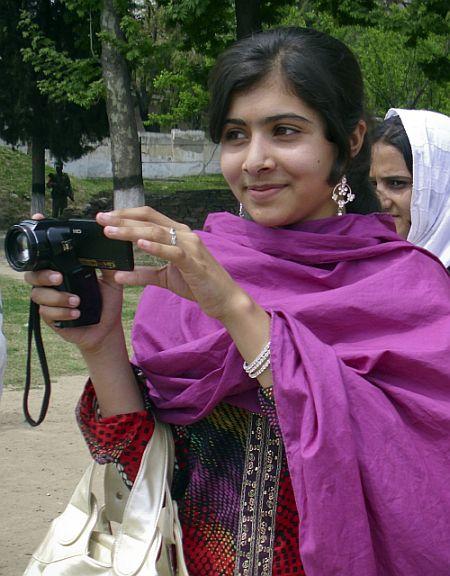
The Taliban attack on 14-year-old Malala Yousufazai, who campaigned for education for girls in Pakistan's North Western Frontier Province, horrified Pakistanis across the religious, political and ethnic spectrum
While there's been much outrage in Pakistan's media, the question doing the rounds is what the Pakistanis themselves are doing enough to protect the rights of women and girls?
As the Guardian puts it, 'being a female and an activist is hard in Pakistan. There are several layers that need to be pushed through to be heard, and there are few promises of safety in a society that's imploding and then torn asunder by foreign strikes.'
Rediff.com gives its readers a glimpse of what it's like being a woman in Pakistan
Click on NEXT to go further...
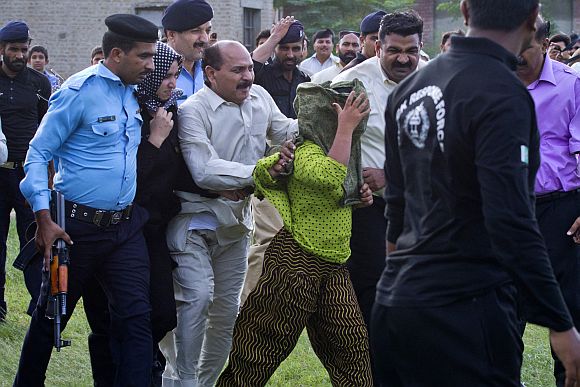
Security officials surrounding Rimsha Masih, (C, green scarf) a Christian girl accused of blasphemy, move her to a helicopter after her release from Adyala jail in Rawalpindi September 8, 2012.
A Pakistani military helicopter plucked a young Christian girl accused of blasphemy from a prison yard on Saturday and flew her to a secret location after she was granted bail. Live broadcasts showed heavily-armed police surrounding Rimsha Masih, believed to be no older than 14, covering her face with a green scarf as she walked to the helicopter
Click on NEXT to see more PHOTOS...

Memoona, 23, a survivor of an acid attack, poses for a photograph inside her residence in Karachi. Memoona says the acid attack took place when a boy threw acid on her face and body over an old family feud. Memoona, who is currently enrolled in nursing school, said she lost her eye but not her spirit.
The Pakistan Senate unanimously passed the Acid Control and Acid Crime Prevention Bill on December 12, 2011 recommending a 14-year to lifetime imprisonment sentences and levies fines up to Rs1 million ($11,160) for the perpetrators of the crime, local media reported.
Click on NEXT to see more PHOTOS...
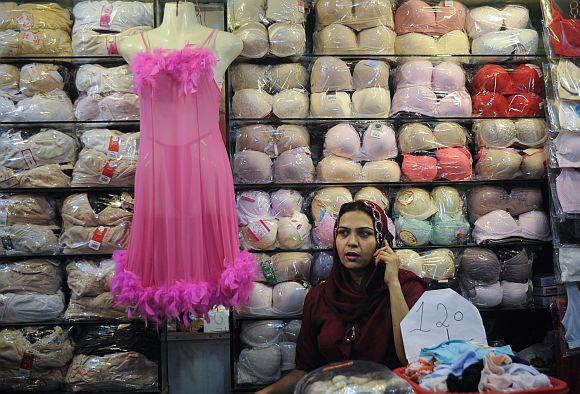
Fauzia, 28, talks on a phone while she awaits customers inside a lingerie shop at a 'ladies only' shopping mall in Karachi.
Click on NEXT to see more PHOTOS...
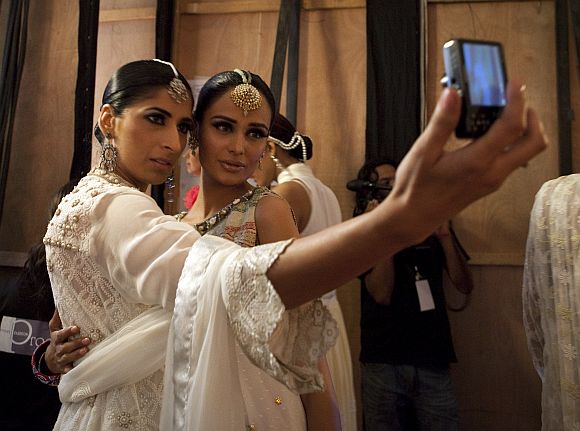
Models Xillehuma (left) and Mehreen Sayed, wearing creations by designer Zarmina Khan, pose together before taking to the catwalk during Fashion Pakistan Week in Karachi. The four day long event, which was rescheduled twice due to security concerns, featured over 30 Pakistani designers.
Click on NEXT to see more PHOTOS....
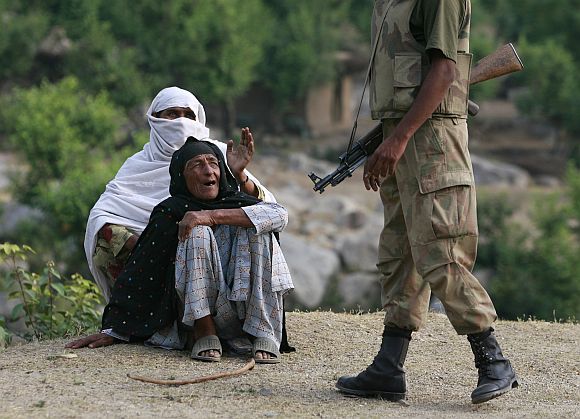
Pashtun women ask a soldier to help them flag down transport while awaiting a ride from a check-post in Buner district, about 220 km northwest of Islamabad. Nearly 2 million people fled fighting in the northwest which intensified in 2009 when the army moved to push the Taliban out of Buner district before launching an offensive in Swat. Thousands of people have been returning to Buner since the government announced that it was now safe for people to go home.
Click on NEXT to see more PHOTOS...
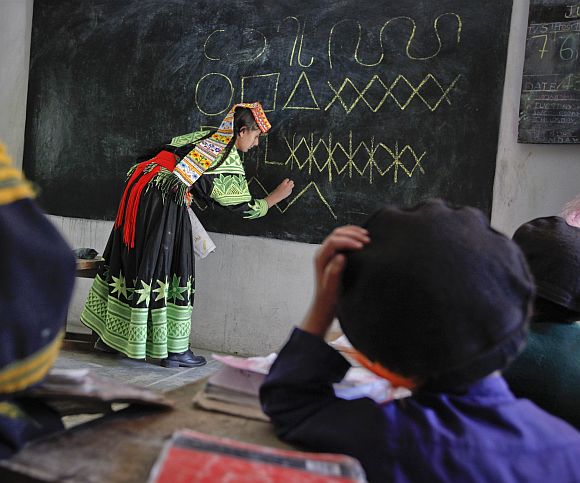
Teacher Noorzia Khan, 16, writes letters from the Kalasha alphabet on a blackboard during a lesson at the Kalasha Dur school and community centre in Brun village, located in Bumboret Kalash valley.
Nestled among the valleys of Pakistan's mountainous northwest, the Kalash are a tiny religious community that claim descent from Alexander the Great's army, and say they are under increasing pressure to convert to Islam.
The Kalash, who number about 3,500 in Pakistan's population of 180 million, are spread over three valleys along the border with Afghanistan and are known for their distinctive dress, vibrant religious festivals, and polytheism.
Click on NEXT to see more PHOTOS...

A Pashtun girl stands at the doorway to her family dwelling in the outskirts of Peshawar on July 10, 2012.
Click on NEXT to see more PHOTOS...
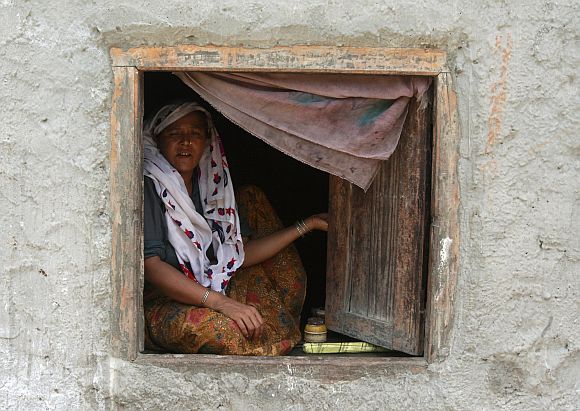
A woman sits by the window of her house in a slum area of Karachi
Click on NEXT to see more PHOTOS...

Kulsoom, 33, a survivor of an acid attack, sits with her son Salman, 9, inside their residence in Karachi.
Kulsoom, a mother of six children, lost both of her eyes in an acid attack by her husband after a domestic argument in 2008.
Click on NEXT to see more PHOTOS...

Siblings sit on a weighing scale at a wood saw mill in Abbottabad.
Click on NEXT to see more PHOTOS...
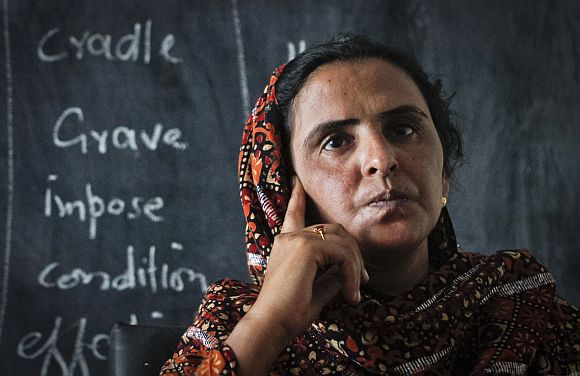
Mukhtaran Mai gives an interview at a school in Meerwala, located in the Muzaffargarh District of Pakistan's central Punjab province.
Mai, a Pakistani victim of a village council-sanctioned gang-rape, is a symbol of the country's oppressed women.
Mai was attacked on the orders of a village council in 2002 as a punishment because her brother -- who was 12 at the time --was judged to have offended the honour of a powerful clan by allegedly having an affair with one of its women.
Click on NEXT to see more PHOTOS...
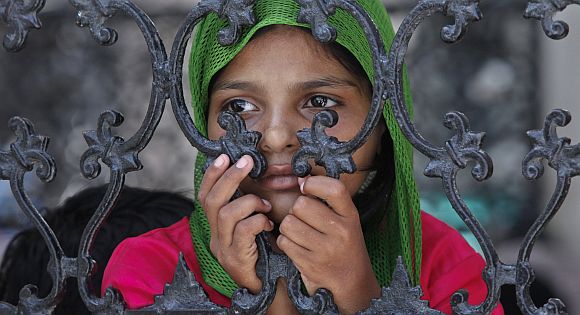
A girl looks through a metal partition, separating men and women, at a mosque inside the Data Darbar Sufi shrine, after Friday prayers during the month of Ramadan in Lahore.
Click on NEXT to see more PHOTOS...
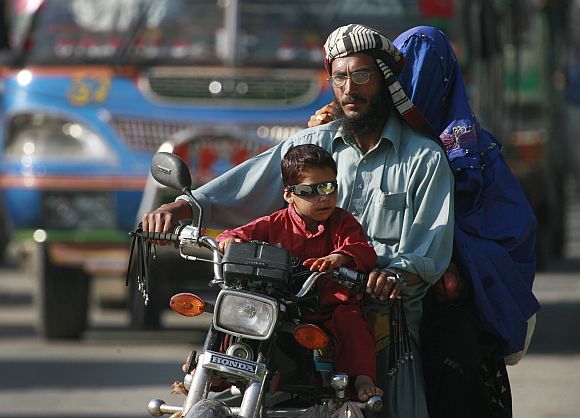
A family waits on a bike to cross a checkpoint in Malakand district while returning back to their village in the Swat Valley region, about 170 km northwest by road from Pakistan's capital Islamabad
Click on NEXT to go further...
...